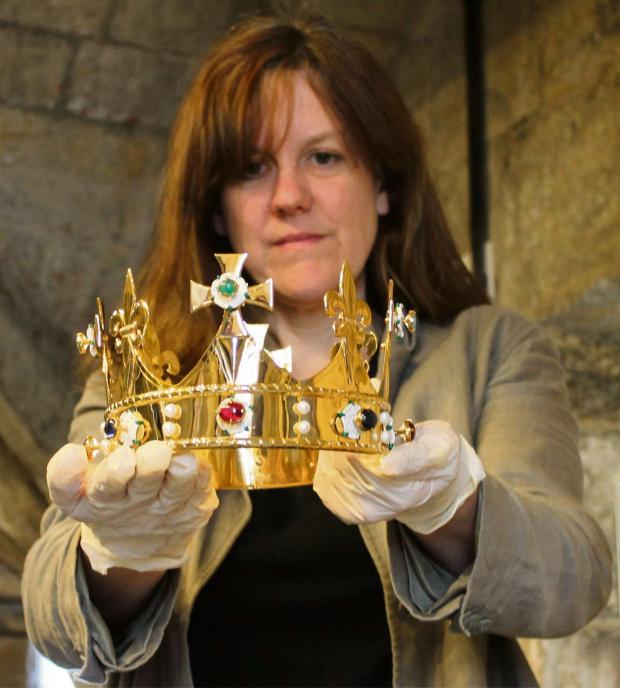'via Blog this'
Richard III's ‘funeral crown’ goes on display in York
11:31am Wednesday 28th May 2014 in News
HE was buried 600 years ago in a hurriedly dug grave with none of the traditional royal pomp and ceremony, but now the regalia Richard IIInever had is to go on display.
A "funeral crown" created especially for Richard III by a leading Ricardian historian is on show at the Richard III Experience in York.
Dr John Ashdown-Hill, who was involved in the archaeological dig that discovered Richard's remains, commissioned a valuable 15th century-style coronet in tribute to Richard, and it is now on display to visitors at the museum in Monk Bar, before it starts a tour of the country and plays a part in the king's reburial.
The crown was created by medieval jewellery expert George Easton, who took his inspiration for its design from historical sources relating to the infamous monarch, including illustrations and surviving relics from the period.
Dr Ashdown-Hill said: “The crown is plated with gold, with the circle set enamelled with white roses and pearls. On the roses are set rubies and sapphires, representing the livery colours of the house of York. The crosses of the crown have more enamelled white roses, set with emeralds and turquoises.”
Dr Ashdown-Hill was inspired to commission the crown when he was carrying Richard's newly-discovered remains, covered with a Royal standard, away from the dig in Leicester.
He had been involved in the search from the start, tracing Richard's living relatives descended from his sister Anne of York through an all female line, and researching on the modern location of his grave.
Housed in Monk Bar, one of the medieval gateways to York, the Richard III Experience has been open since April 2014 and explores the monarch’s influence on the city of York.
It is run by the JORVIK Group and director Sarah Maltby said: "Richard III’s reign may have been short but his influence on York cannot be underestimated. The Richard III Experience is the perfect place for people to explore Richard’s life and reign and we are excited to have access to the replica crown to help to give our visitors insight into the majesty of medieval kings.”
The crown will be on display there until early July.









